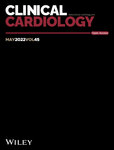Safety of mechanical lung vibrator and high-frequency chest wall oscillation in patients with cardiac implantable electronic device
The study hypothesised that two CPT devices can be used safely in patients with CIED. To test this hypothesis, the study included 46 patients with CIEDs (25 pacemakers, 15 implantable cardioverter-defibrillators, and six cardiac resynchronization therapy-defibrillators). Lead integrity parameters remained unchanged in all patients. It was therefore concluded that:
- CPT may be safely applied to CIED patients,
- without compromising the lead integrity and device function.
Prepared on the basis of:

Safety of mechanical lung vibrator and high-frequency chest wall oscillation in patients with cardiac implantable electronic device. Gwag HB, Joh HS, Kim JS. Clin Cardiol. 2021 Apr;44(4):531-536.
Introduction
Chest physiotherapy (CPT) is a non-pharmacological therapy to facilitate removal of airway secretions. There have been concerns about electromagnetic interference (EMI) and lead integrity problems during CPT using vibrating devices in patients with cardiac implantable electronic devices (CIED). However, data on this issue remain scarce, and there are no guidelines on how CPT should be used in patients with CIED. The purpose of the study was to prospectively evaluate the safety of CPT using two types of physiotherapy devices in patients with CIED.The study was designed as a prospective, interventional study, enrolling patients from March 2015 to April 2016.
- The study was designed as a prospective, interventional study, enrolling patients from March 2015 to April 2016.
- The study incorporated two sequential applications of chest wall vibrating devices for CPT to evaluate the safety of these devices.
- There were some limitations to the study: it was a single-centre investigation, with a small sample size of subjects with no clinical indication for CPT.
Results and conclusions
A total of 46 volunteers were included in the analysis: 25 with pacemakers, 15 with ICDs, and 6 with CRT-Ds. The median patient age was 66 years, and those with pacemakers had the highest median age. Twenty-five patients (54.3%) had hypertension and 14 (30.4%) had persistent atrial fibrillation. All device generators were implanted in a subcutaneous pocket. The median lead dwell time was 29.9 months, ranging from 3.0 to 218.6 months.
Two types of vibrating devices were applied sequentially. In the first phase, a mechanical lung vibrator (UM-30 M, Unix Electronics, Seoul, Korea) with 60-Hz vibration frequency was used. A high-frequency chest wall oscillation (HFCWO) device (Vest, Hill-Rom, Chicago, IL, USA) was applied for the second phase.
During the first phase of CPT, the mechanical lung vibrator did not generate any noise or EMI events in any of patients regardless of chest wall area or vibration intensity. There was no significant change in lead integrity parameters or device settings. Similarly, there was no inappropriate detection of noise or EMI during the second phase of CPT with HFCWO. However, the post-phase 2 CPT device test showed lower atrial sensing amplitude compared to pre-CPT results.
It was concluded that chest physiotherapy can be safely used in patients with CIED. Considering inadvertent pacing acceleration caused by false activity sensing of chest wall vibration, turning off the accelerometer-based rate modulation function should be considered when HFCWO is used.
More in:


